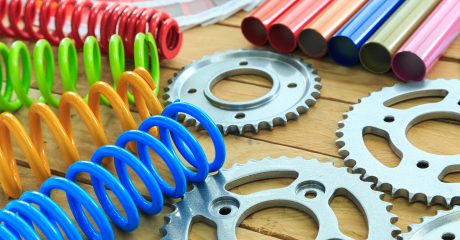There are several metal surface finishing types for prototyping and production. However, not all of them fit well into the workings of all products. Many surface finishes focus on improving the aesthetics of your product. Others tend to improve the product’s functionality, while some do both. In this article, we will focus on metal plating finishes and their effects on the metal surface.
What Are Metal Plating Finishes?
Let’s go back to the basics! What is metal plating? The plating process is a post-production process. It involves the coating or covering of the surface of a workpiece with a thin layer of metal. The basic understanding of plating is to have a thin layer of one metal coating a substrate. Consequently, the aim is to improve the overall quality of the product.
Standard Industrial Plating Finishes
- Zinc Plating – Zinc is one of the most inexpensive materials that provide galvanized coatings on metal substrates. Application of zinc is by way of molten bath dipping and spraying. The zinc plating process produces a very ductile coating. For this metal plating finish, it is easy to control the thickness and uniformity.
- Chrome Plating – This plating process usually involves using chromic acid and trivalent chromium baths to produce an overlay on the metal parts. The main aim of chrome plating is to improve the aesthetics of the material. However, chromium metal plating finishes also increase the corrosion resistance and hardness of the material. Those chrome-plated parts are suitable for industrial applications. Sometimes, it also helps to restore tolerances on worn parts.
- Copper Plating – When your applications call for cost-efficiency and high conductivity, copper plating is the way to go. This procedure usually serves as the leading coating pretreatment for the following plated finish. It is one of the most popular metal plating finishes for electronic components like circuit boards. It is a popular choice because of its low material cost and high plating efficiency.
- Nickel Plating – Another popular plating metal is nickel because of its usefulness in electroless plating. Nickel plating helps to coat household products like cutleries, shower fixtures, doorknobs, etc., to enhance aesthetics and wear resistance. This plating technique is best for aluminum and copper. However, it works on several other metals. It also serves as the underlying plating for chromium.
- Gold Plating – Gold is popular for its high electrical conductivity and resistance to oxidation. A simple way to impart these important properties on silver and copper metals is by gold plating. Its application is extensive in improving conductivity in electronic parts like electrical connectors.
- Silver Plating – Similar to gold plating, silver plating also improves the aesthetic appeal of the material involved. Electrical conductivity also comes to play when it comes to silver plating. Many manufacturers choose silver plating for its cost-effectiveness as it is cheaper than gold. It also plates parts made from copper more adequately.
Applications of Metal Plating Finishes
Metal plating finishes offer several different advantages in multiple industries. Their ability to offer parts with improved strength and hardness makes them useful in the automotive and aerospace industries.
Some of the common applications include:
- Chrome plating for car parts, bath taps, wheel rims, etc.
- Zinc plating is useful for iron parts in automobiles and bridges.
- Electroplating tin onto iron makes good food storage parts like tin cans.
- Silver or gold plating is valuable in the jewelry industry.
Custom Tool’s Services
When you need a custom tool, you need a partner who can meet you more than halfway, whether you’re developing a new tool or looking for a way to manage your existing inventory. Customers trust us to meet this need for three main reasons: experience, quality and fast delivery! Contact us today for more information.
